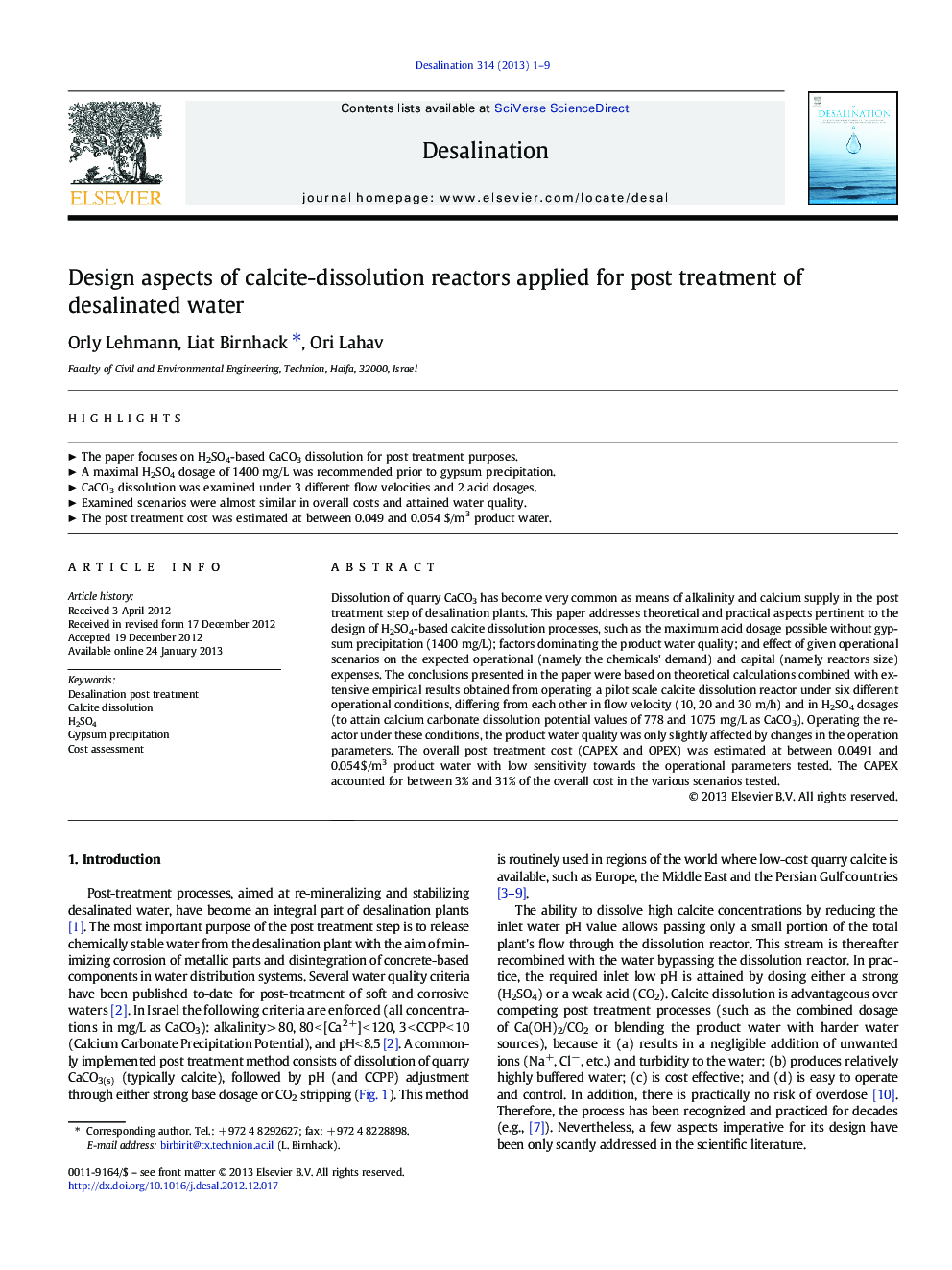| Article ID | Journal | Published Year | Pages | File Type |
|---|---|---|---|---|
| 623802 | Desalination | 2013 | 9 Pages |
Dissolution of quarry CaCO3 has become very common as means of alkalinity and calcium supply in the post treatment step of desalination plants. This paper addresses theoretical and practical aspects pertinent to the design of H2SO4-based calcite dissolution processes, such as the maximum acid dosage possible without gypsum precipitation (1400 mg/L); factors dominating the product water quality; and effect of given operational scenarios on the expected operational (namely the chemicals' demand) and capital (namely reactors size) expenses. The conclusions presented in the paper were based on theoretical calculations combined with extensive empirical results obtained from operating a pilot scale calcite dissolution reactor under six different operational conditions, differing from each other in flow velocity (10, 20 and 30 m/h) and in H2SO4 dosages (to attain calcium carbonate dissolution potential values of 778 and 1075 mg/L as CaCO3). Operating the reactor under these conditions, the product water quality was only slightly affected by changes in the operation parameters. The overall post treatment cost (CAPEX and OPEX) was estimated at between 0.0491 and 0.054 $/m3 product water with low sensitivity towards the operational parameters tested. The CAPEX accounted for between 3% and 31% of the overall cost in the various scenarios tested.
► The paper focuses on H2SO4-based CaCO3 dissolution for post treatment purposes. ► A maximal H2SO4 dosage of 1400 mg/L was recommended prior to gypsum precipitation. ► CaCO3 dissolution was examined under 3 different flow velocities and 2 acid dosages. ► Examined scenarios were almost similar in overall costs and attained water quality. ► The post treatment cost was estimated at between 0.049 and 0.054 $/m3 product water.
